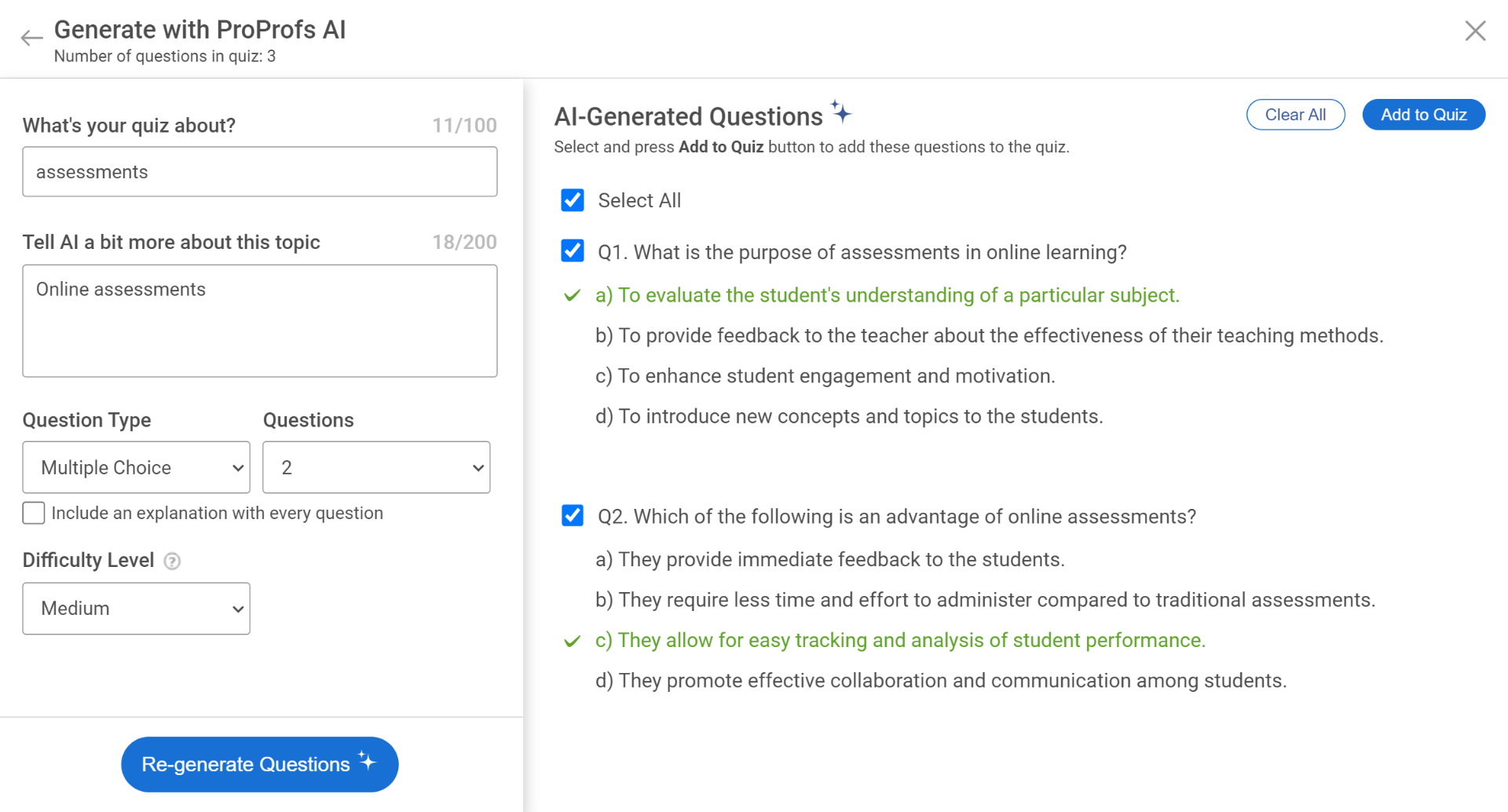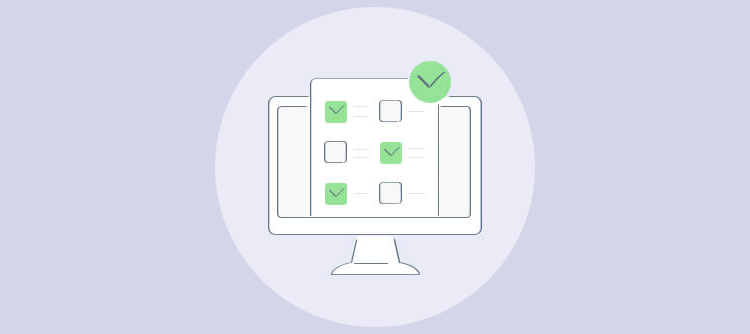
Bad leaders can be a business’s worst nightmare!
From a lack of appreciation to workplace toxicity, poor leadership provides plenty of fuel for employee turnover.
To avoid such consequences, you need to take special care when choosing people for key leadership roles. This means ensuring your hiring, training, and succession planning processes are flawless and feature effective leadership assessments.
Strategic leadership testing improves leadership selection and development processes, boosting productivity, enhancing workplace positivity, and helping you achieve your business goals.
This guide discusses everything you need to know about leadership assessments for improved business outcomes.
What Is a Leadership Assessment?
Leadership assessment involves evaluating an individual’s leadership ability or suitability for a particular leadership role using tools such as online scored & personality tests, structured interviews, and employee surveys.
A comprehensive leadership evaluation assesses various characteristics related to leadership, such as:
- Knowledge of what it takes to be a good leader
- Key leadership skills, such as communication, motivating, planning & decision-making, delegation, etc.
- Cognitive abilities, such as critical thinking, abstract reasoning, and problem-solving
- Personality and behavioral traits
- Domain knowledge
- The individual’s leadership style
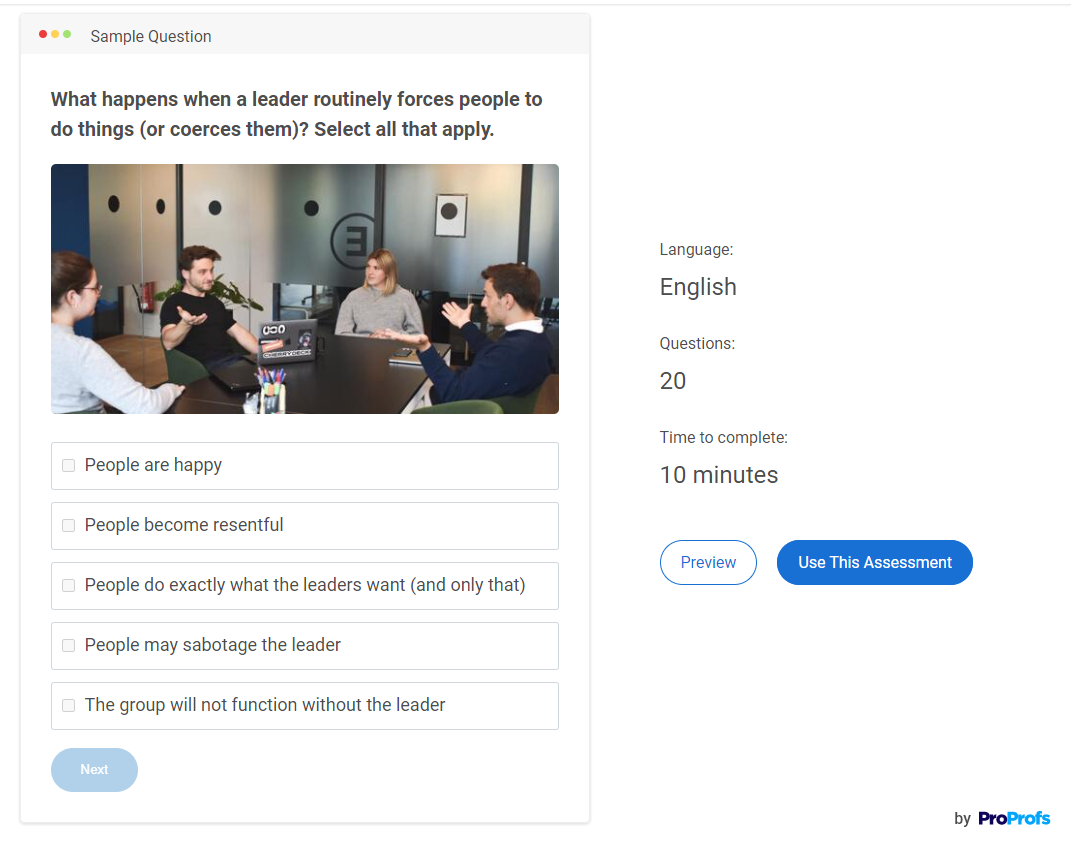
You can conduct leadership assessments for various purposes, such as:
- Hiring for leadership and managerial positions
- Implementing effective succession planning
- Conducting leadership development training
- Helping leaders and managers with self-improvement
Leadership assessments can help you maintain and grow your business in various ways. Scroll on to the next section to learn how.
Why Are Leadership Assessment Tests Important?
Leadership assessment tests are crucial because they provide a clear and fair way to evaluate the skills and potential of leaders within an organization. These tests are important for several reasons:
- Objective Evaluation: They offer a consistent method to measure important leadership qualities, reducing the influence of personal opinions or biases that can occur during interviews or evaluations.
- Consistency Across the Organization: Using these tests ensures that all candidates are evaluated by the same standards, no matter where they are in the company. This makes the process fair and uniform.
- Predictive Insight: Leadership assessments help predict how well someone might perform in a leadership role by carefully checking their skills and potential against what the job needs.
- Strategic Alignment: These tests help make sure that the process of choosing and developing leaders fits well with the organization’s overall goals, placing capable individuals in key positions.
These assessments are key to ensuring that leadership positions are filled based on skill and suitability, making the selection process straightforward and just.
What Are the Benefits of Leadership Assessments?
Now that you understand the critical importance of leadership assessments, let’s delve deeper into the advantages of incorporating them into your hiring, succession planning, and training processes.
- Hire Better Leaders
Establishing an effective leadership assessment process lets you make better, more informed decisions when hiring for critical leadership and management positions.
For example, you can create an online skill test to quickly and easily screen candidates based on how they score on core leadership skills, such as team management, communication, domain knowledge, etc.
Then, you can follow it up with another test to assess their personality, and finally, conduct a structured interview to bring it all together. This way, you can hire faster while ensuring the selected candidate is the right fit for the role and the company’s work culture.

- Identify Employees With Leadership Potential
Promoting existing employees to leadership positions may provide many advantages, such as improved employee loyalty and retention, a smooth leadership transition, and lower expenditure.

Leadership tests let you create a solid succession plan by providing a streamlined and effective way to identify potential leaders in your organization. You can utilize various online leadership assessment tools to assess leadership potential, including online tests, 360-degree feedback surveys, video interviews, and more.
- Deliver Effective Leadership Development Training

Leadership assessment plays a key role throughout a leadership and management training program. Here’s how:
- Before the training: Assessments help you identify the competencies you need to train potential leaders on. So, conducting a leadership needs assessment before you design a training program lets you tailor the training material to the employee’s requirements.
Such targeted training sees a better return on investment and helps reduce wasted training costs.
- During the training: Leadership training courses featuring formative leadership development assessments are more engaging since they provide an interactive learning experience and let learners track their learning progress.
Plus, online tests during training can also help boost comprehension through instant, question-specific feedback.
- After the training: You can conduct an organizational leadership assessment immediately after the training to check the effectiveness of your training program and make any necessary adjustments.
You can also conduct tests a while after the training as a knowledge refreshment tool.
Related Read: How to Evaluate Learning with Pre and Post-Training Tests
- Help Leaders With Self-Improvement
Whether to get better at managing themselves or others, leaders must regularly engage in self-improvement activities to sharpen their leadership skills. Self leadership assessments can help them in their leadership development journey by enabling them to evaluate their progress easily.
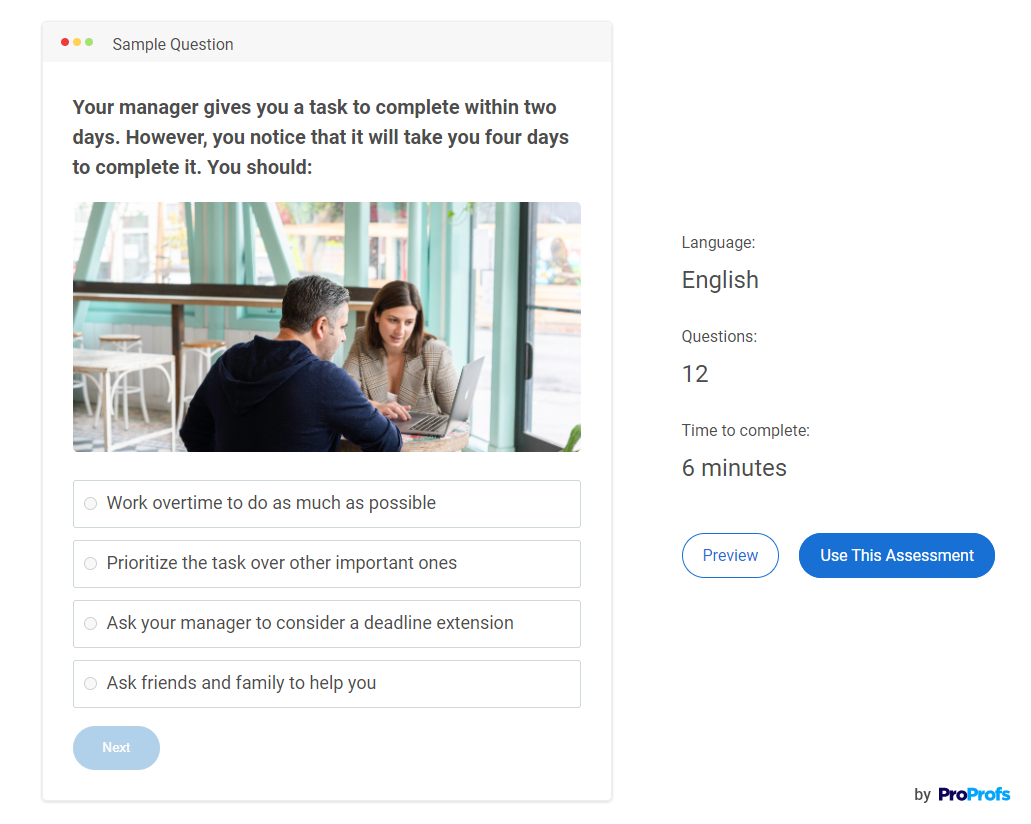
Besides tracking progress, leaders can also use leadership quizzes to learn new leadership strategies and better understand their leadership styles and preferences.
💡Pro Tip:
You can also help your leaders self-improve by providing them with online training courses that they can take in a self-paced way.
You can create your online leadership courses quickly and easily using a learning management system, such as ProProfs Training Maker, that comes with professionally designed, ready-to-use, and customizable courses on leadership and management.
Watch: How to Create an Online Course
- Create Productive Teams
Leadership is central to team development and success. Leaders help bond the team, resolve conflict, provide direction, and inspire team members to strive for excellence.
Leadership assessments help you create stronger and more effective teams by enabling you to improve the leadership in your organization.
- Create a More Positive Work Environment
Effective and empathetic leaders can help create a positive organizational culture that fosters open communication and boosts employee engagement, productivity, and creativity. On the other hand, poor leadership is the biggest driver of workplace toxicity.

Leadership assessment enables you to accurately assess personality traits and ensure that you hire or promote positive and empathetic people committed to promoting positivity and eliminating toxicity in your organization.
In doing so, leadership tests can also drastically bring down employee turnover since workplace toxicity is the number one reason employees leave their jobs (over 10 times more important than dissatisfaction with compensation).
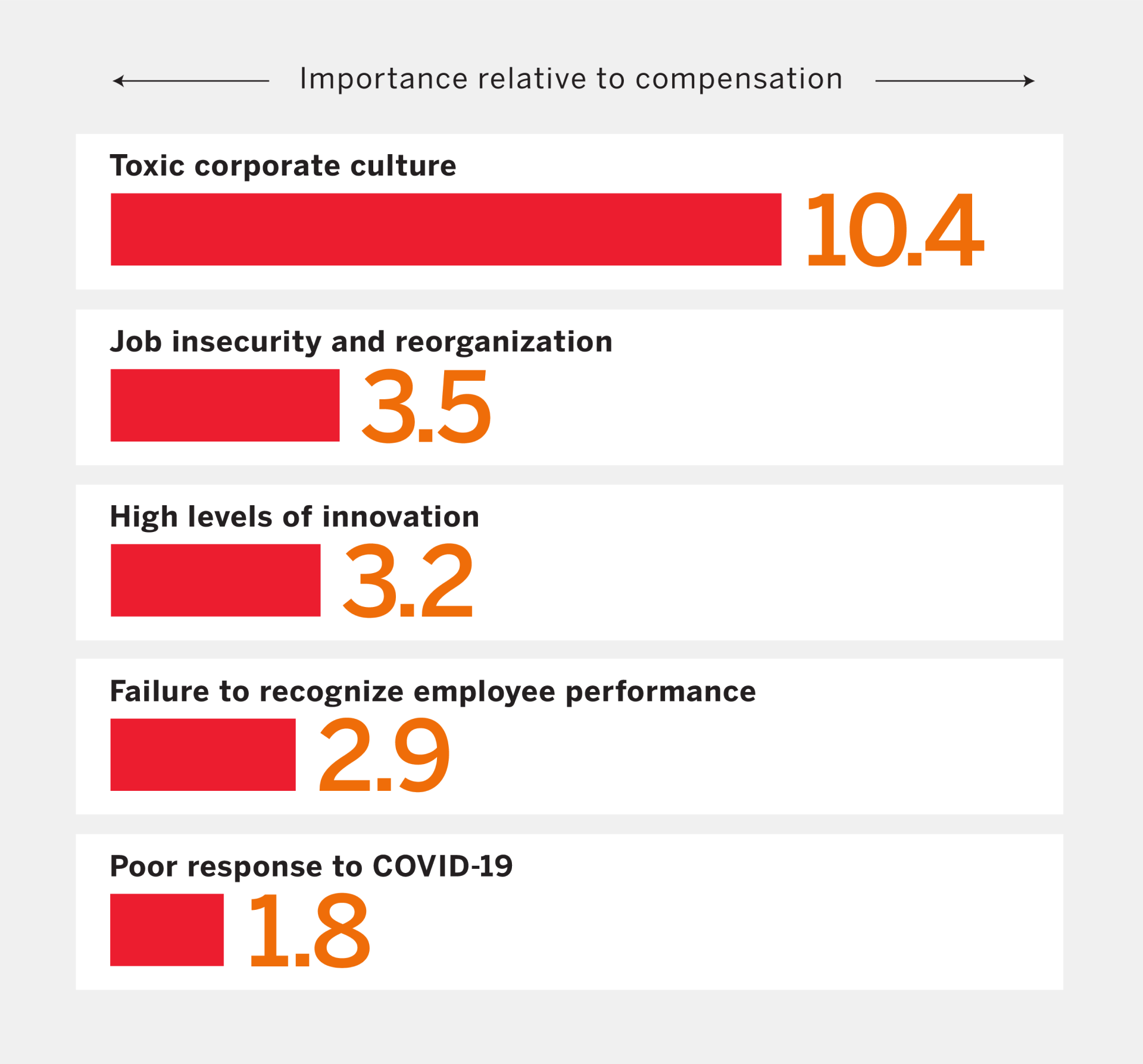
Image Source: sloanreview.mit.edu
- Achieve Long-Term Organizational Goals
Leaders must be adept at strategic ‘big picture’ planning, effectively implementing a business’ vision and values, fostering innovation, and motivating employees to go above and beyond. This way, your company’s leadership plays a key role in achieving long-term business objectives.
Conducting leadership assessments for hiring and promotion will ensure that you fill top leadership positions with people who have the skills and temperament required to push your organization toward its goals.
Those are the various benefits of effective leadership assessment. Now, let’s look at the types of leadership assessments.
Types & Examples of Leadership Assessment Tests
Organizations employ a variety of leadership assessment tests to evaluate the diverse skills and personality traits essential for effective leadership. Here’s a closer look at some common types:
- Leadership & People Management Test
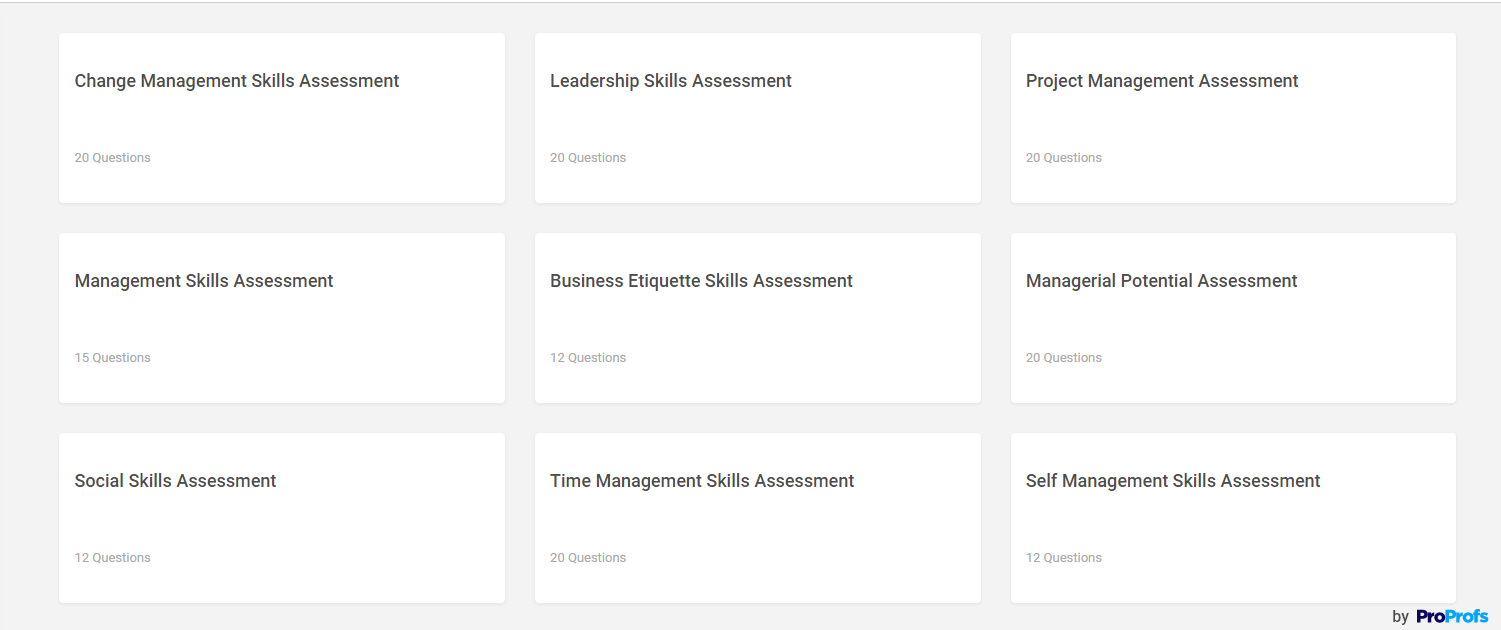
This leadership skills assessment evaluates a candidate’s skills in managing teams and leading effectively. It measures abilities in areas such as delegating tasks, motivating staff, resolving conflicts, and making strategic decisions.
This test is crucial for roles where direct leadership and team management are key responsibilities.
- Big 5 Test

Image Source: simplypsychology.org
Also known as the Five Factor Model or OCEAN, this personality assessment examines five broad personality traits: openness, conscientiousness, extraversion, agreeableness, and neuroticism. These traits predict behavior in various contexts, including leadership.
The results can predict a leader’s potential to succeed in their role based on how their personality traits align with the demands of leadership.
- Communication Skills Test

This test assesses a leader’s ability to communicate effectively and use their communication skills to influence team morale and productivity.
It looks at various aspects of communication, such as clarity of expression, listening skills, nonverbal communication, and the ability to adapt messaging to different audiences.
Related Read:Communication Assessments: A Guide for Hiring & Training
- DISC Test
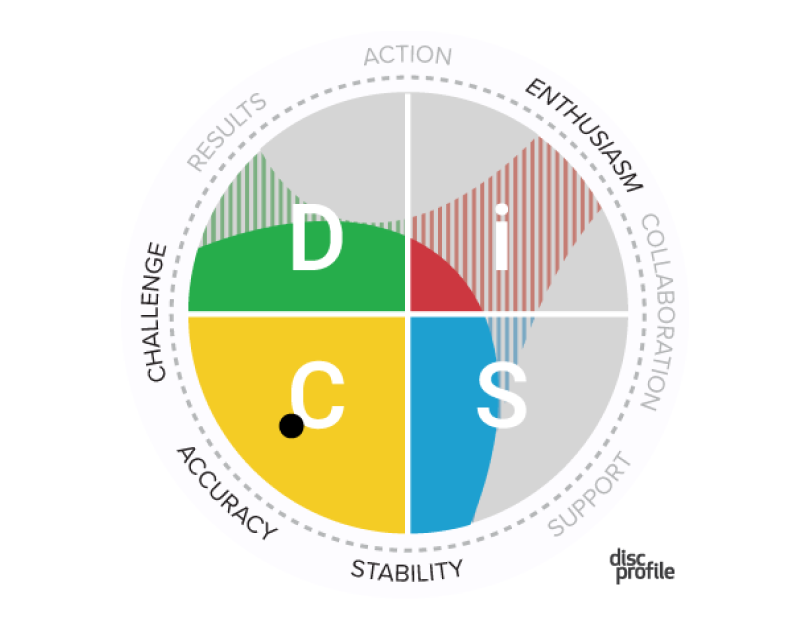
Image Source: discprofile.com
This test categorizes personalities into four primary behavior types: Dominance, Influence, Steadiness, and Compliance (DISC). It provides insights into how individuals react in team environments, their leadership approaches, and their conflict resolution styles.
Understanding these traits helps organizations place leaders in roles where their natural behavioral tendencies will be most effective.
- The 16 Types Test

Image Source: 16 personalities
Inspired by the Myers-Briggs Type Indicator, this test divides personalities into 16 different types based on four dichotomies: introversion vs. extroversion, sensing vs. intuition, thinking vs. feeling, and judging vs. perceiving.
It’s used to understand a leader’s preferred way of interacting with the world and making decisions, which can significantly impact their leadership style and effectiveness.
- Enneagram Test

Image Source: integrative9.com/enneagram/
This test identifies which one of the nine distinct personality types best describes an individual. Each type is defined by its core motivations, fears, and interpersonal dynamics.
The Enneagram is valuable for developing emotional intelligence and self-awareness among leaders, enhancing their ability to manage and relate to others.
- Business Judgment Skills Test
Focuses on evaluating a leader’s ability to understand complex business situations, analyze information, and make informed decisions. It measures strategic thinking, problem-solving capabilities, and the ability to predict potential outcomes and impacts.
This test is essential for roles that require making critical business decisions that affect the company’s direction and success.
How to Conduct a Leadership Assessment
Here are the steps for implementing a successful leadership assessment process in a structured way to enhance your organization’s leadership.
Step 1: Understand the Role
If you’re conducting a leadership effectiveness assessment to find a replacement for a leadership role, you must gain full clarity about that role. Here are the things you must know:
- The leader’s goals and responsibilities
- The activities they’ll perform
- Their team’s/department’s and superiors’ expectations of them
- The departments that’ll be indirectly affected by their leadership
- The competencies and personality traits required for the role
Step 2: Test Core Competencies
Once you’ve analyzed the role and its requirements, you can start with the leadership assessment process.
First, you must assess candidates on the key leadership abilities needed for the role. Here are some of the top leadership skills you must consider evaluating with your skill test:
- Communication: A good leader shares knowledge and information in a clear, concise, and empathetic way using effective verbal and nonverbal communication skills that include the ability to listen actively.

- Vision & Planning: Creates an effective, shared vision and formulates plans based on it to achieve business objectives
- Change management: Can help team members adapt to major organizational changes through systematic planning and implementation
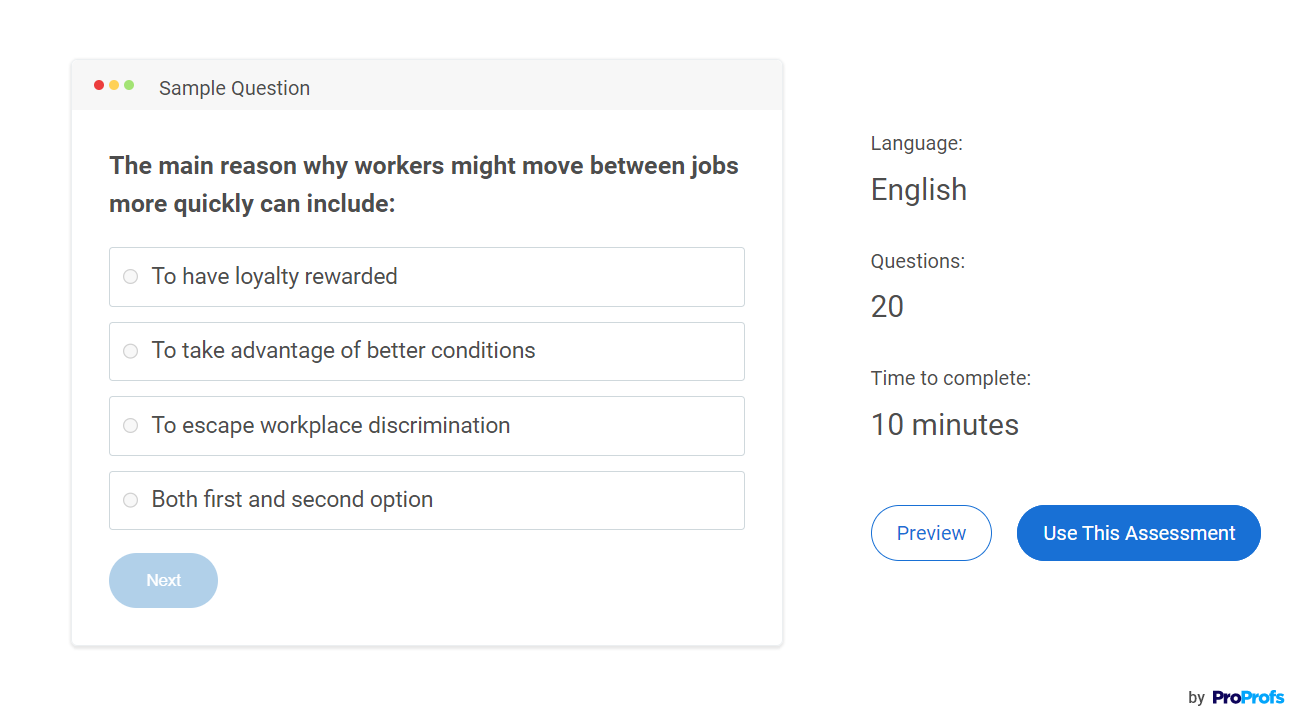
- Self-awareness & self-management: Can consciously assess their thoughts and feelings to manage time, tasks, goals, and stress accordingly
- Social skills: Builds trust and relationships using effective interpersonal skills
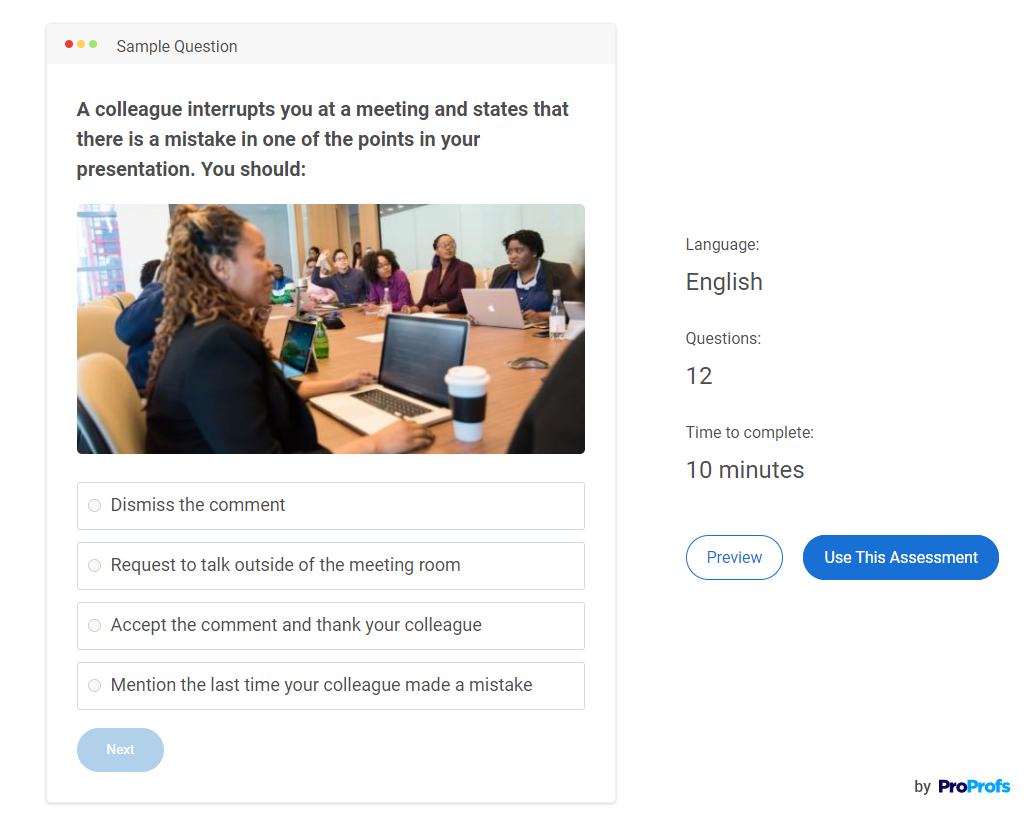
- Team building: Fosters team spirit and helps team members bond and collaborate
- Coaching & mentoring: Helps employees understand the work, the workplace, and themselves
- Conflict management: Helps employees in disagreement find common ground using best practices for conflict resolution
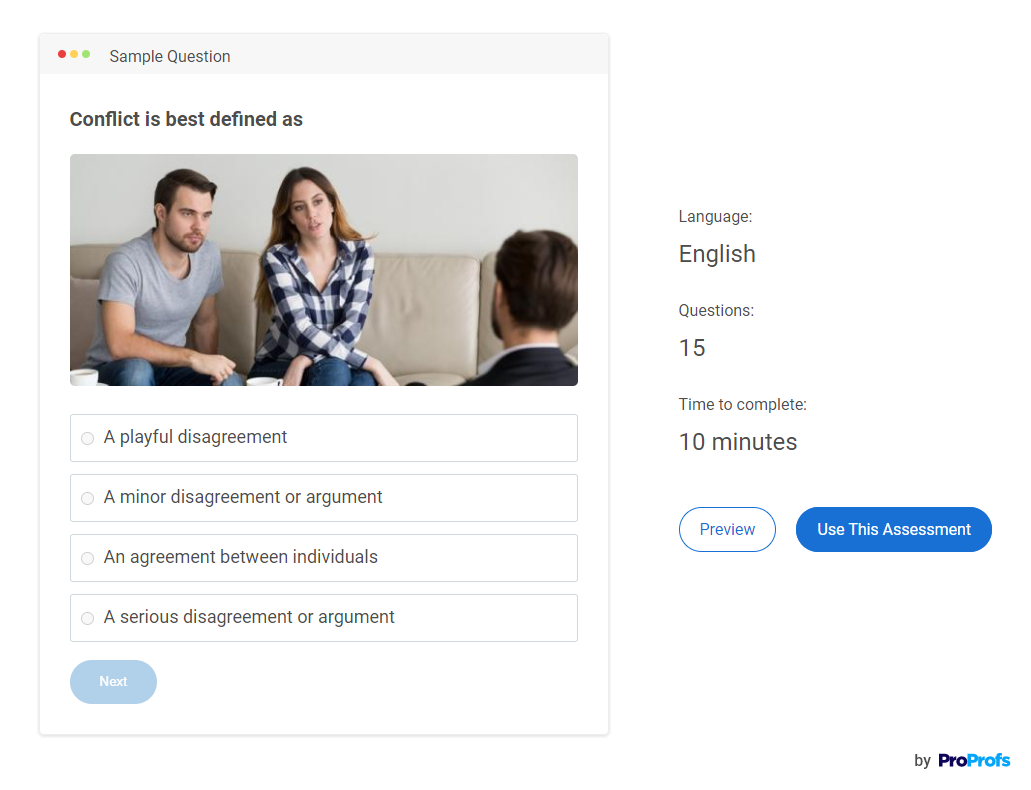
- Creativity & innovation: Builds a culture of innovation that encourages new ideas and unconventional approaches to improve products, processes, and customer experience
- Feedback & performance management: Helps employees improve or maintain their performance by giving empathetic and actionable feedback
- Cognitive abilities: Employs cognitive abilities, such as critical thinking, logical reasoning, and abstract reasoning, to come up with quick and creative solutions to problems and devise strategies for business growth
- Delegation: Effectively delegates tasks and decisions to streamline day-to-day operations and groom potential successors
- Presentation skills: Delivers impactful presentations to communicate vision and strategy and motivate subordinates
- Influence & Negotiation: Uses influence, persuasion, and negotiation skills to change people’s opinions and convince them to do things that are in everyone’s best interest
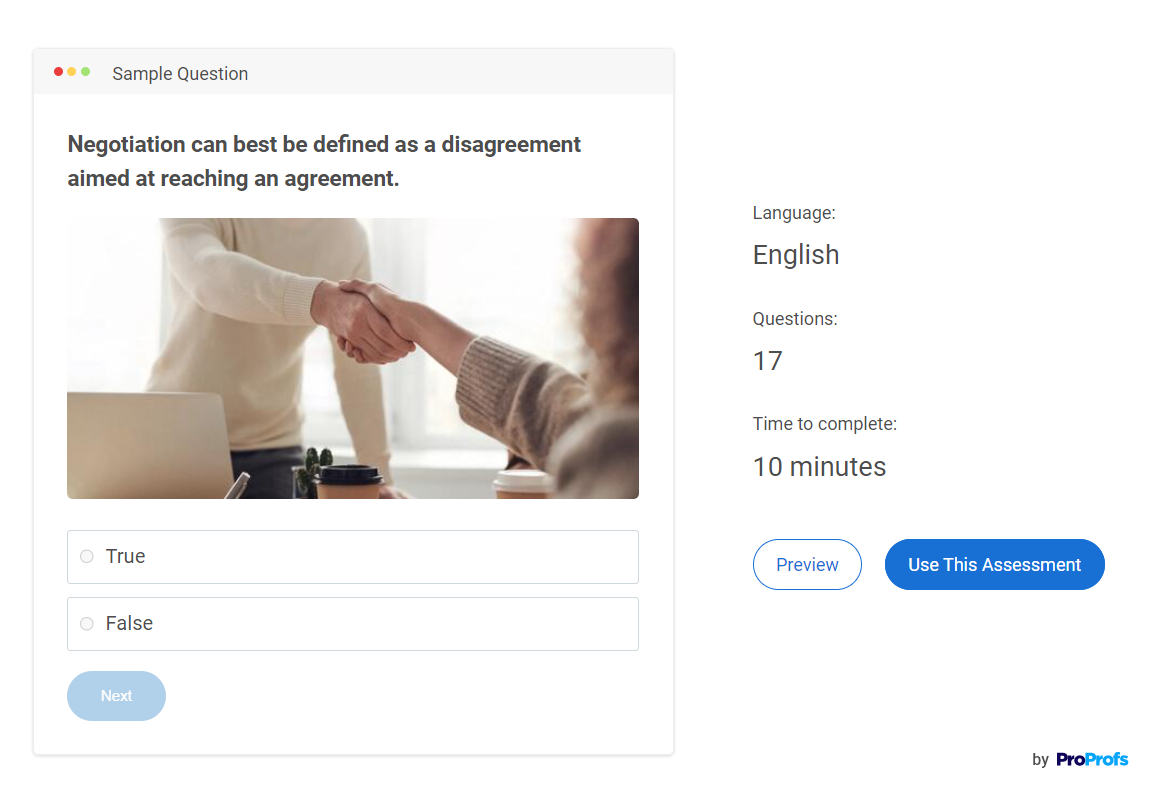
- Domain expertise: Has the technical competence required to guide subordinates effectively and promote employee well-being
- Commitment toward diversity, equity & inclusion: Values and leverages workplace diversity to enhance collaboration and innovation and create a more positive work environment
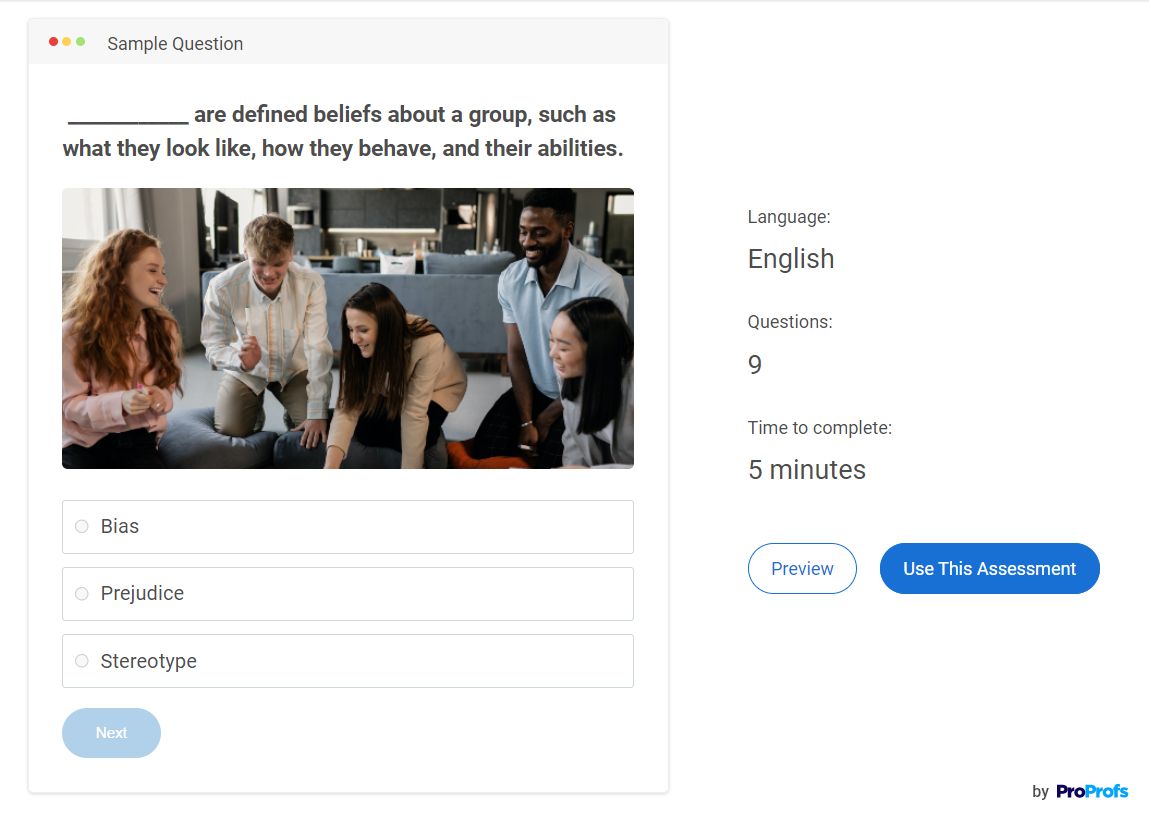
- Safety & compliance knowledge: Promotes a culture of compliance in the organization to minimize risk and ensure employee safety
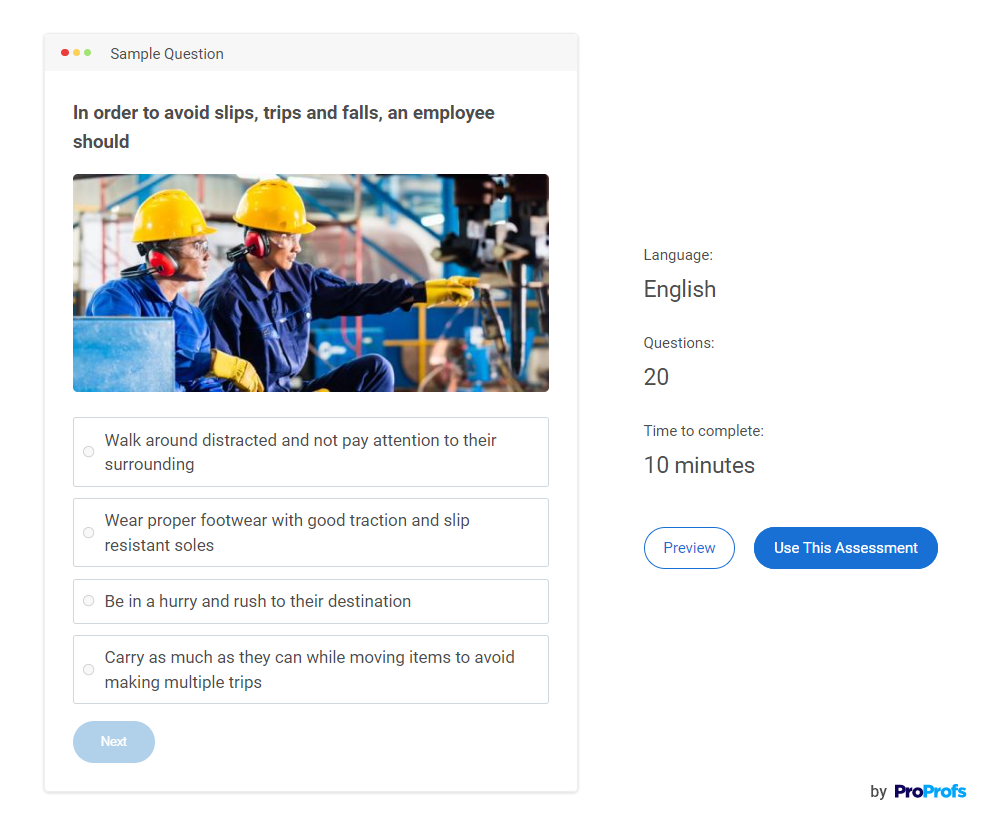
Once you’ve identified the required competencies for your leadership role, you can assess candidates or employees on them using online assessment tests.
Step 3: Assess Personality
Testing personality traits as part of your leadership assessment offers many benefits, such as:
- It lets you find out if the candidate has the personality and behavioral traits required for leadership
- Lets you make better hiring decisions by checking for work culture fit
- Ensures role alignment
- Helps leaders improve their interpersonal skills
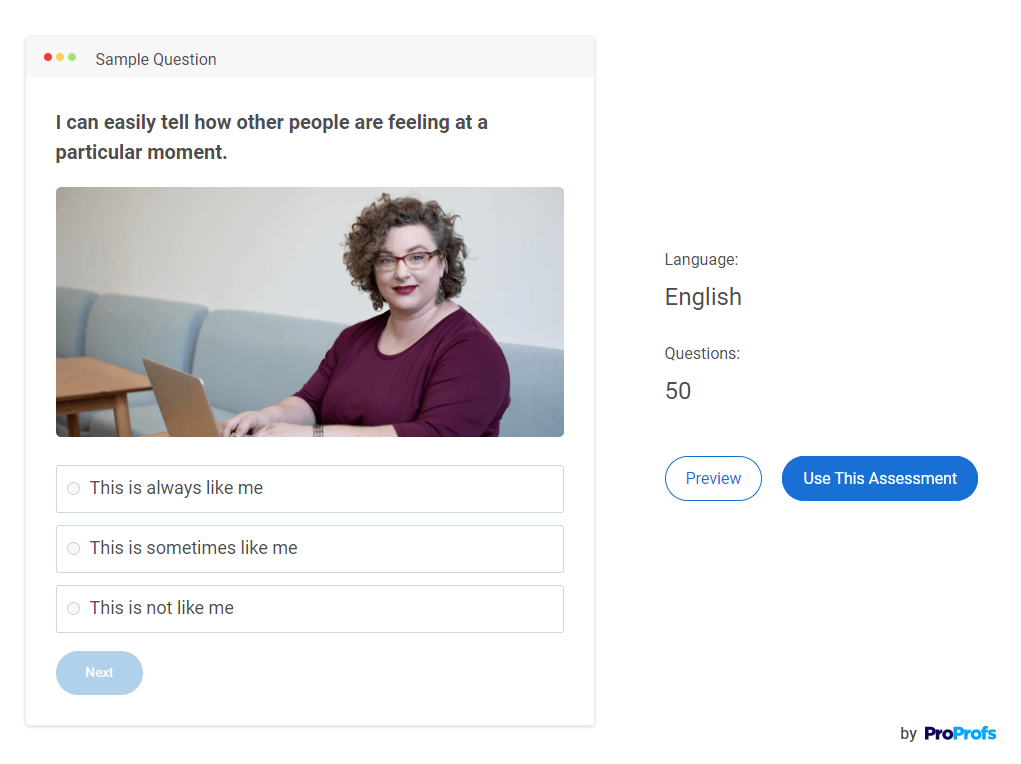
Here are some of the personality traits you must look for in candidates for leadership positions:
- Honesty & Integrity: Good leaders lead honestly, fairly, and ethically, remain true to their values, and display high levels of conscientiousness
- Accountability: They take responsibility for their actions and decisions to ensure unhampered productivity
- Highly positive attitude: Are highly positive and energetic, which lets them accomplish challenging tasks and encourage others to do the same
- Decisiveness: Make critical decisions in a well-informed, unbiased, and timely way using excellent analytical skills
- Adaptability: Are flexible and resilient, enabling them to easily shift gears when things don’t go as planned
- Extroversion: Have an extroverted personality that helps them engage and motivate employees and build relationships
- Emotional stability: Can maintain their emotional balance in stressful situations
- Discipline: Have good self-discipline so they can manage tasks and deadlines effectively and promote a culture of discipline
- Confidence & assertiveness: Can communicate and act assertively to inspire trust and effectively execute the organization’s vision
- Emotional intelligence: Understand their feelings and those of others, enabling them to create deep bonds and lead with empathy
- Learning orientation: Have a strong zeal to learn new skills and increase their knowledge so they can lead better
For your leadership assessment, you can use popular personality tests such as DISC (Dominance, Influence, Steadiness, & Compliance), Myers–Briggs Type Indicator (MBTI), Enneagram, Big Five, etc.
Or, you can create your own personality test with online assessment software.
Watch: How to Create a Personality Assessment
❗ Important Note:
While personality tests are an effective way to ensure role & culture fit, you must ensure your personality assessment is consistent with a business necessity and relevant to the role. Also, you mustn’t use personality assessments as the sole hiring or succession criteria or even as a screening tool.
Step 4: Conduct Structured Interviews
In a structured interview, you ask all the candidates the same leadership assessment questions, enabling you to compare them easily. You can conduct structured interviews to understand candidates’ skills, knowledge, and personality.
They are especially useful for assessing confidence, speaking skills, and nonverbal communication elements, such as body language, facial expressions, and eye contact.
You can conduct structured interviews for leadership assessment in different ways, such as:
- face to face
- via video conferencing platforms, such as Google Meet, Zoom, etc.
- Using video interview questions
Among these methods, video questions offer the most flexibility since they let you easily interview candidates or employees from any time zone.
Watch: How to Create a Video Interview Quiz
Step 5: Collect 360-degree Feedback
Feedback from an employee’s subordinates, peers, and superiors can help you better understand their leadership style and capabilities. 360-degree feedback can also help potential leaders improve their leadership capabilities so they are ready when the time comes to assume the new responsibility.
You can easily collect 360-degree employee feedback for your employee leadership assessment by creating and sharing a survey using online survey software, such as ProProfs Survey Maker, that offers ready-to-use employee survey templates and lets you ask survey questions in 20+ formats.
Watch: How to Create an Online Survey
Step 6: Assess Leadership Style
If you’re conducting a leadership assessment for succession planning, you must assess the leadership style of your potential successors. Knowing their leadership style can help your future leaders reinforce their unique leadership qualities and become authentic leaders.
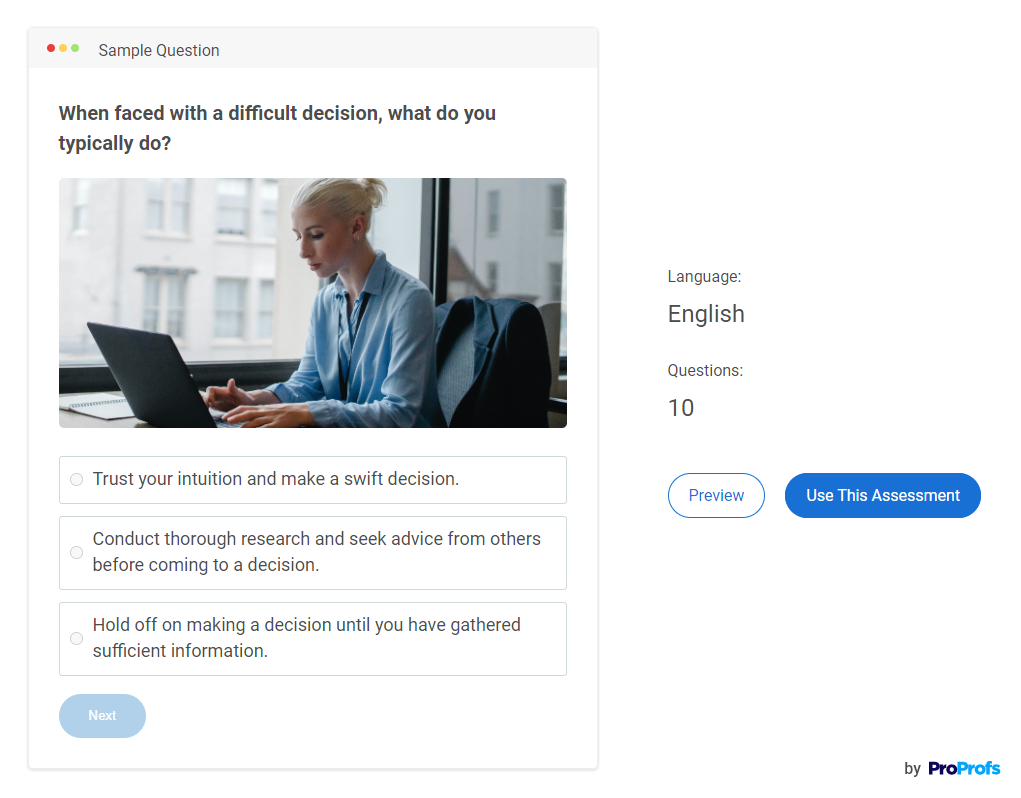
Step 7: Provide Constructive Feedback
Whether you’re assessing job candidates or existing employees, you must provide them with honest and clear feedback once you’re done with the assessment. You must explain to the people who didn’t get shortlisted why they weren’t a good fit.
This would mean a positive recruitment experience for the candidates, which can improve their brand image. Meanwhile, existing employees can use personalized feedback to work on their leadership abilities, so they’ll be eligible for leadership roles in the future.
So, that was the process for conducting a leadership assessment. As you can see, online skill and personality tests play a central role in the assessment process. So, let’s quickly look at how you can create your tests using an online assessment tool.
How to Create Online Tests for Leadership Assessment
Here’s the process for creating online leadership tests in five easy steps.
Step 1: Pick a readymade test or start from scratch
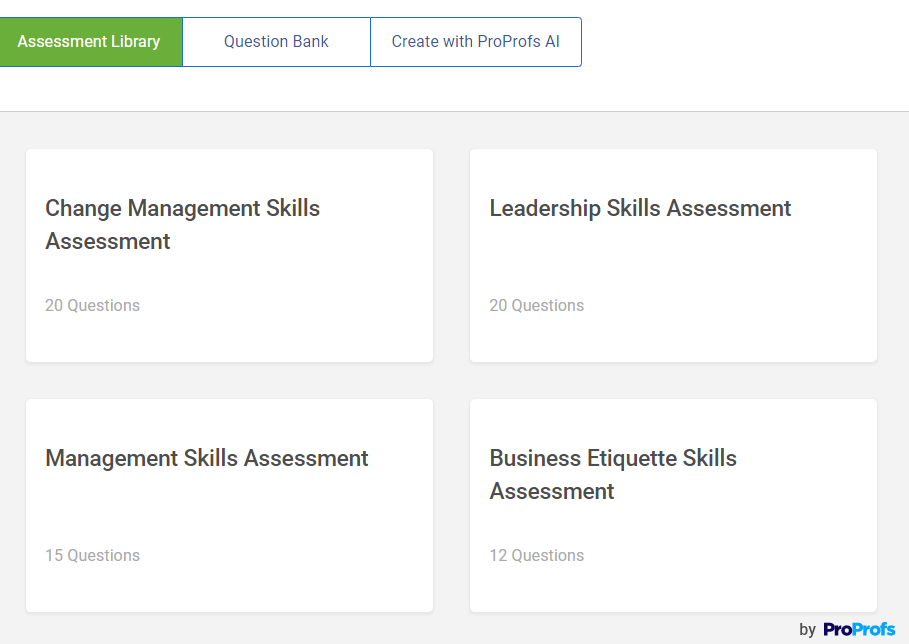
Step 2: Create questions, generate them with AI, or import them from a question library
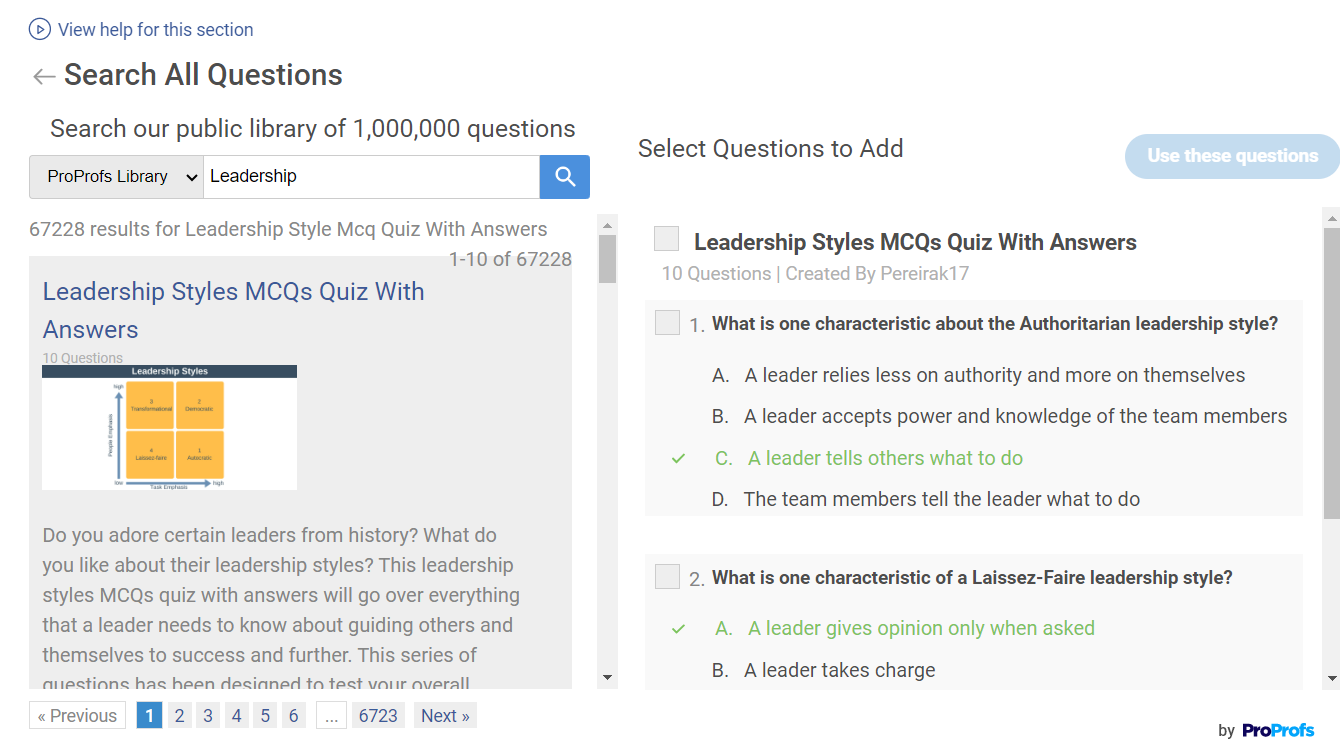
Watch: How to Create a Quiz Using Question Bank & Templates
Step 3: Set up scoring/personality mapping
- Assign scores to questions and answer options for skill/knowledge tests
- Map answer options to personality outcomes for personality tests
Step 4: Configure security, proctoring, and other settings
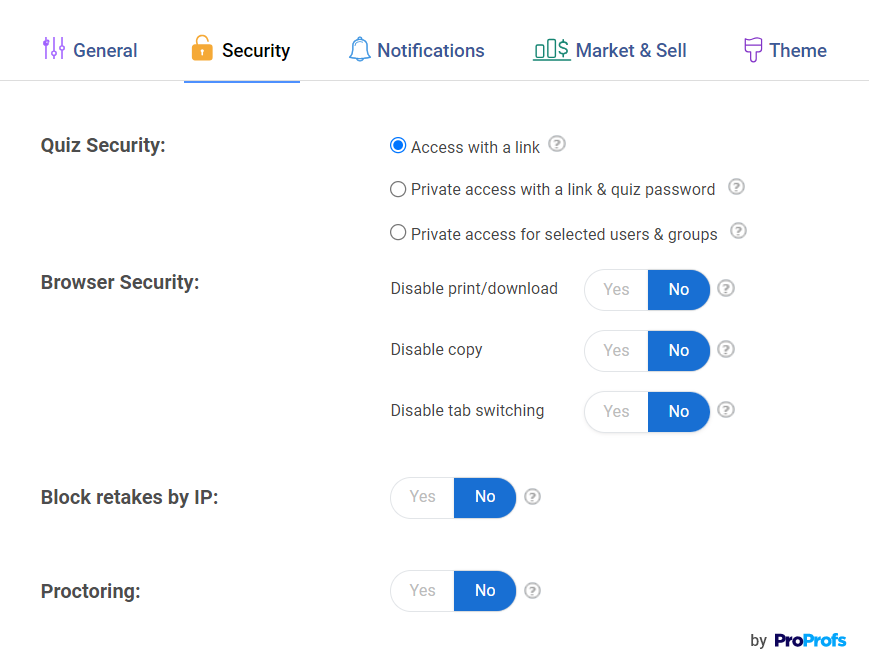
Step 5: Customize your test and add your logo
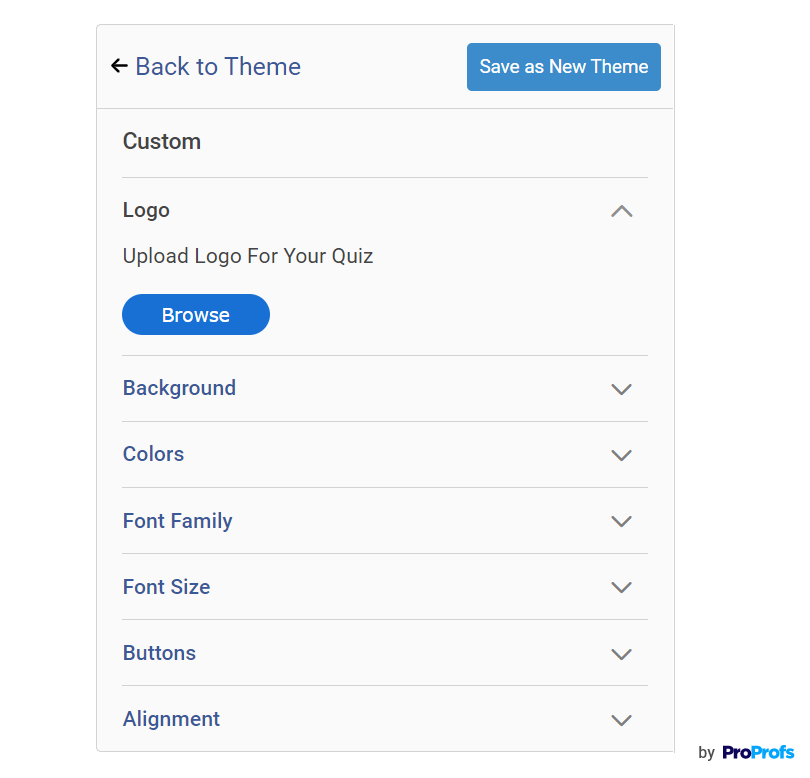
Check out our ultimate guide for an in-depth look at the creation process for online assessment tests.
Tips for Creating the Best Leadership Assessment Tests
Creating leadership tests with online testing software is quite straightforward. But you must do a few more things to get the best results. Here they are:
- Tailor Your Questions to Role Requirements
As mentioned, you must gain clarity regarding your requirements before starting your leadership evaluation process. The same holds for crafting your leadership test questions. Each question in your leadership tests must be relevant to your requirements and leadership assessment parameters.
- Use Various Question Formats
Using various question formats in your leadership tests is a great way to make them more engaging and insightful. You can use multiple-choice, checkbox, true/false, matching, video-response, and more.
Watch: Types of Questions in Online Assessment
- Add Media to Your Test
Adding media to your leadership assessment tests is another excellent way to make them more interesting. You can add media to your questions in various ways, such as:
- You can add an image to the question statement
- Add images as answer options
- Add a video to the test and ask questions based on it
Watch: How to Create a Video Quiz
- Ask Situational Questions
Situational questions can be a great addition to your leadership tests. They’re highly engaging and great for assessing practical knowledge and decision-making skills.
For your situational questions, you can create a different scenario for each question or create a comprehension-style question where you present a single scenario and ask multiple questions based on it.
Here’s an example of a situational question for leadership assessment.
- Ask Open-Ended & Video-Response Questions
Besides asking objective questions, you must also ask open-ended questions that let the candidates express themselves freely. This will help you better understand who they are as a person.
Depending on your requirements, you can ask for a text, audio, or video response to your open-ended questions.
Video-response questions can be a particularly great option since they let you check the candidates’ non-verbal communication abilities and are a convenient way for them to answer your questions.
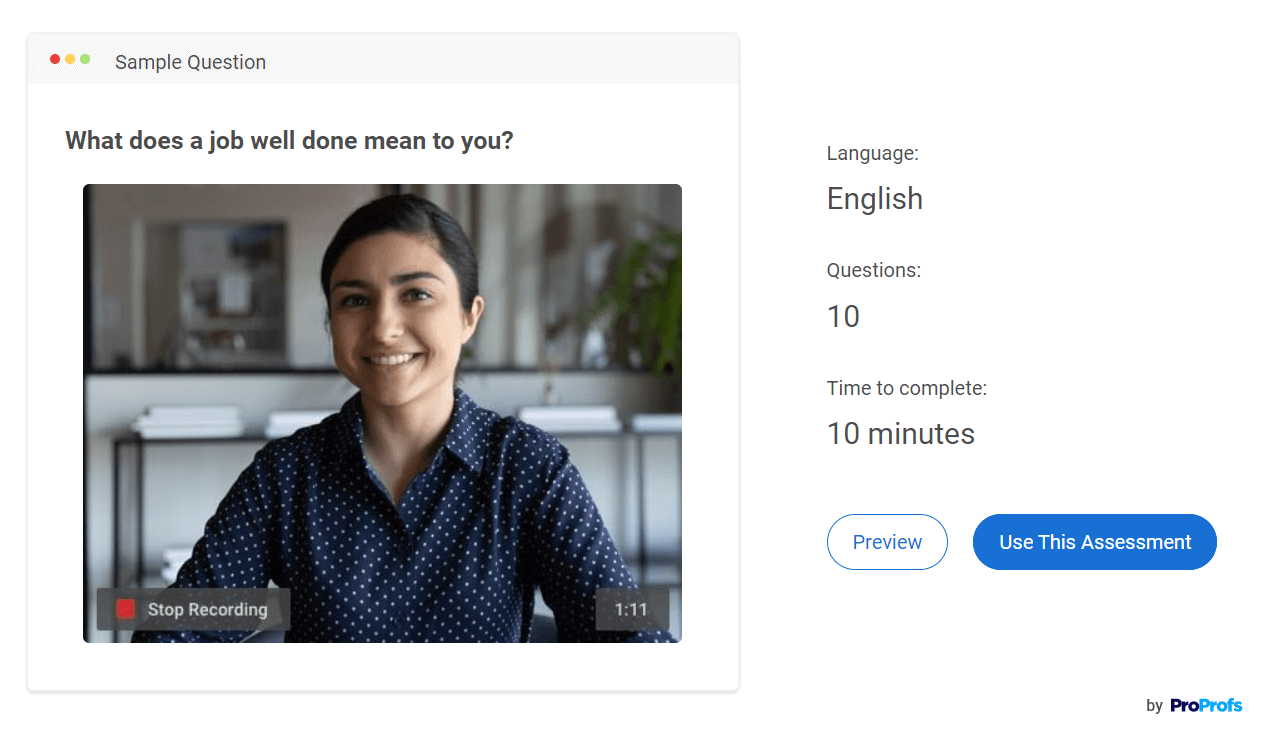
- Configure Security Settings
Top leadership assessment software tools let you ensure your exam’s credibility using secure settings for privacy and cheating prevention. Here are the settings you must configure:
- Make your tests private and add password protection
- Enable question and answer option shuffling
- Enable tab-switching prevention
- Enable remote proctoring
- Prevent copying and printing of test content
Besides configuring the above settings, you can also prevent cheating by creating a question pool and using it to automatically present each candidate with a different set of questions.
Watch: How to Configure Your Quiz Settings
- Tag Questions to Analyze Competencies
Question tagging can be very useful if you’re creating a single test to assess candidates on multiple leadership skills. By assigning a tag to each question, you can get a competency-wise breakdown of the overall score in the test report, enabling you to thoroughly and accurately analyze the candidate’s competencies.
- Choose the Right Leadership Assessment Tool
To easily implement all the test-making best practices shared above, you need good assessment software. Here’s what you must look for when deciding on your assessment tool:
- Ease of use
- Diverse question types
- Automated scoring and grading
- Privacy and anti-cheating settings
- Compatibility with mobile devices
- Advanced reporting with statistics
- Ready-to-use resources to create tests quickly
Watch: How to Choose the Best Assessment Software
Refine & Redefine Leadership With Online Assessments
Good leadership plays a vital role in the success of teams and the organization. This makes it crucial to establish an effective process of building and maintaining competent leadership at all levels. Online leadership assessment tests make this seamless by letting you hire, train, and promote in a structured way. To get the best results from your assessments, ensure that you choose the right assessment tool for your requirements. ProProfs offers the simplest yet most feature-rich testing platform for leadership assessment. It lets you ask questions in 15+ different ways, configure your tests with 100+ settings, and comes with a huge collection of ready-to-use tests and questions.
Do you want free Quiz Software?
We have the #1 Online Quiz Maker Software for complete learning & assessment


